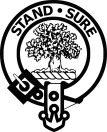Forcing an ASP.NET MVC site to only serve HTTPS
Why force HTTPS?
Hyper Text Transfer Protocol Secure (HTTPS) is the secure version of HTTP, the protocol over which data is sent between your browser and the website that you are connected to. The 'S' at the end of HTTPS stands for 'Secure'. It means all communications between your browser and the website are encrypted.
- HTTPS protects the integrity of your website
- HTTPS protects the privacy of your users
- HTTPS protects the security of your users
- HTTPS is Google recommended best practice
See https://webmasters.googleblog.com/2016/11/building-indexable-progressive-web-apps.html
HTTPS is also being used by Google as a ranking factor – SEO benefit - Users are more likely to convert when they feel more confident that their information is secure – CRO
- Beginning next month, Chrome will start displaying an insecure notification

See https://security.googleblog.com/2016/09/moving-towards-more-secure-web.html
How to force HTTPS
ASP.NET Action Filters
ASP.NET MVC allows you to apply a [RequireHttps] attribute on individual page controllers. It also allows the attribute to be applied globally by adding code to Application_Start in the Global.asax.
The problem with the built-in RequireHttpsAttribute
In a nutshell, the problem is that it returns 302, a temporary redirection HTTP Status Code (see List of HTTP Status Codes [Wikipedia]). This is an SEO problem. A return value of 301 means "Moved Permanently" and is a hint to the search engines to update their indexes.
If the built-in attribute is used, a result similar to the one below is obtained when the page is retrieved:
curl http://www.localexample.com:4433/ -iILk
HTTP/1.0 302 Found
The desired result is:
curl http://www.localexample.com:4433/ -iILk
HTTP/1.0 301 Moved Permanently
Writing your own version of the RequireHttpsAttribute
Writing your own attribute is fairly straight-forward.
- Create a class that inherits from the
RequireHttpsAttributeclass - Override the
HandleNotHttpsRequestmethod. - Add some code to handle running in your local development environment. (NB you will need to create a self-signed certificate for a dummy domain (we use www.localexample.com), install it on your machine and update your hosts file).
- Build the HTTPS address
- End the method by setting the
Resultproperty of thefilterContextto a newRedirectResultthat uses the HTTPS address and sets thepermanentparameter totrue.
Although you can apply this attribute to your controller methods individually, applying it globally minimizes the effort and ensures that nothing is missed.
Wiring up your filter configuration
You will need to create/update the FilterConfig class.
The code shown below illustrates the necessary change, which is simply the addition of your custom attribute to the global filter collection.
Code is then added to the App_Start method in the Global class to run RegisterGlobalFilters.
The code below illustrates how to do this.

No comments:
Post a Comment